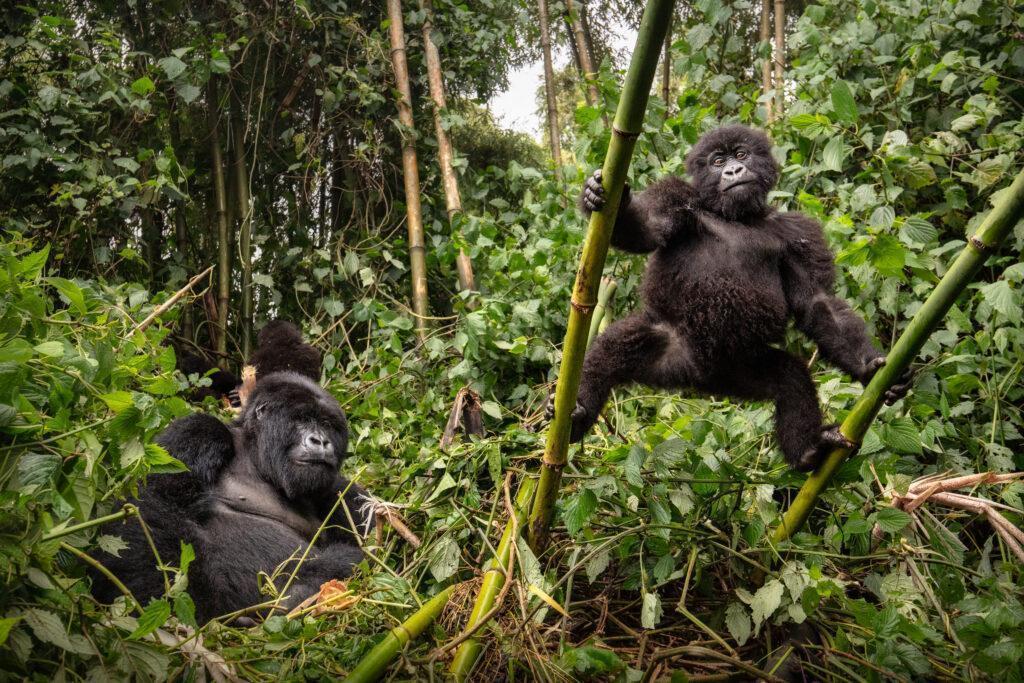Bonobos Reveal Ancient Roots of Human Language: New Study Uncovers Complex Vocal Syntax
Groundbreaking Research Shows Our Closest Relatives Use “Sentence-Like” Call Combinations
By Sophie Berdugo
A revolutionary study of bonobo vocalizations has uncovered the first unambiguous evidence of non-trivial compositionality in non-human animals—revealing that the evolutionary building blocks of human language may be at least 7 million years old. This discovery fundamentally changes our understanding of how complex communication evolved in primates.
The Linguistic Breakthrough
For the first time, researchers have demonstrated that bonobos combine calls in ways that:
✔ Create new meanings not present in individual calls
✔ Follow syntactic rules similar to basic human language structures
✔ Serve specific social functions like calling for help or coordinating group movement
“This is revolutionary,” says Maël Leroux (University of Rennes). “It’s the cornerstone for the next decade of comparative linguistics.”
Decoding the Bonobo “Language”
5 Months in the Congo Jungle
An international team led by Mélissa Berthet (University of Zurich) conducted painstaking research:
🌳 Followed 30 bonobos in Kokolopori Bonobo Reserve (DRC)
🎤 Recorded 1,000+ vocalizations (half being call combinations)
📝 Documented 300+ behavioral contexts for each sound
The Bonobo “Dictionary”
Using linguistic analysis methods, researchers mapped calls to specific meanings by:
- Grouping similar-situated calls in semantic “clouds”
- Identifying 4 compositional call types (3 showing non-trivial syntax)
Key Example:
🔊 “High-hoot + low-hoot”
= “Pay attention to me” + “I’m excited”
→ New meaning: “Help! I’m in distress!”
What Makes This Discovery So Significant?
1. First Proof of Non-Trivial Compositionality
Previously, only “trivial” combinations were known in animals (where parts keep independent meanings). Bonobos show emergent meaning—where combinations create something new.
Human parallel:
➡ “Bad dancer” ≠ bad + dancer
➡ “Hot dog” ≠ hot + dog
2. Evolutionary Implications
Since both chimps and bonobos show syntax, our last common ancestor (~7 mya) likely had this capacity too.
3. Social Intelligence Connection
Most calls were about:
🤝 Group coordination
🆘 Conflict resolution
🚨 Danger alerts
“This makes sense for fission-fusion societies,” says Martin Surbeck (Harvard). “They need complex communication to manage changing subgroups.”

How This Changes Linguistics
Before This Study:
❌ Only humans could combine sounds to create new meanings
❌ Animal communication was considered mostly fixed/repetitive
After This Study:
✅ Core language abilities evolved much earlier than thought
✅ Human language built on ancient primate foundations
✅ New methods to study animal “linguistics” established
“Bonobos don’t have language,” clarifies Berthet. “But they share parallel cognitive capacities that likely gave rise to ours.”
Future Research Directions
🔍 Do other great apes show similar complexity?
🔍 Can we find even older roots in monkey communication?
🔍 How does this relate to gestural communication in primates?
“This is just the beginning,” says Leroux. “We’re rewriting the book on communication evolution.”
Further Reading
- “The Origins of Compositionality in Primate Calls” – Nature Communications
- “Bonobo Social Cognition and Communication” – Current Biology
- “Evolution of Syntax in Human Ancestors” – Trends in Cognitive Sciences
Image Credits: CC-BY bonobo field research photos.
This article is free to republish with attribution. Follow #ApeLinguistics for updates.

